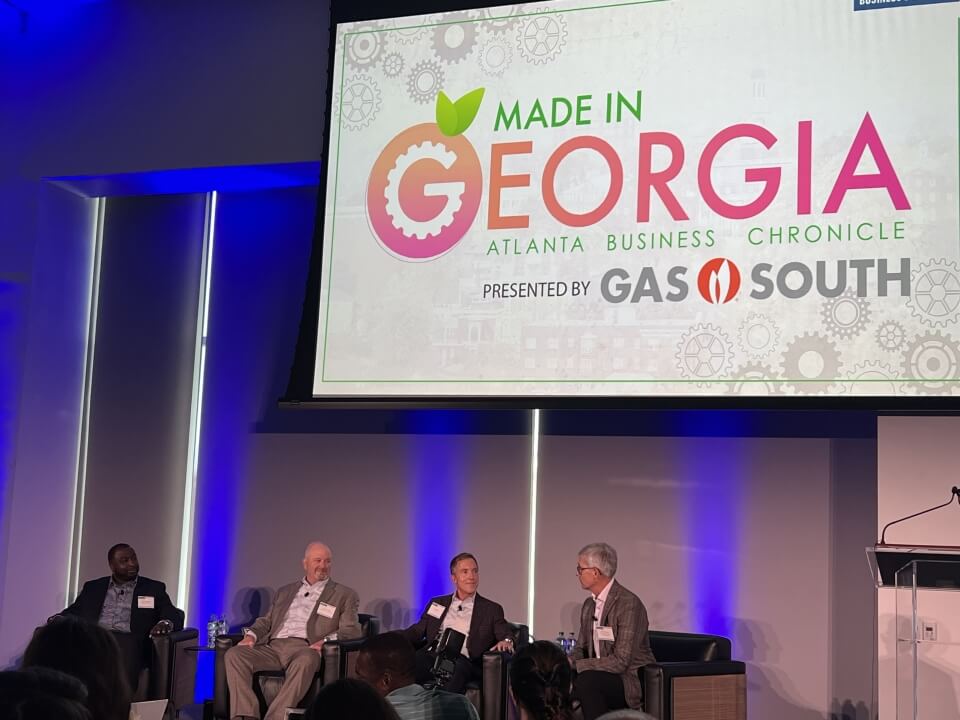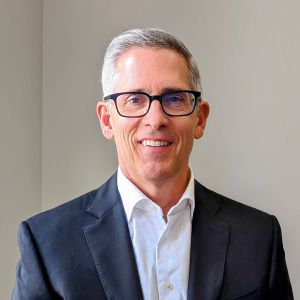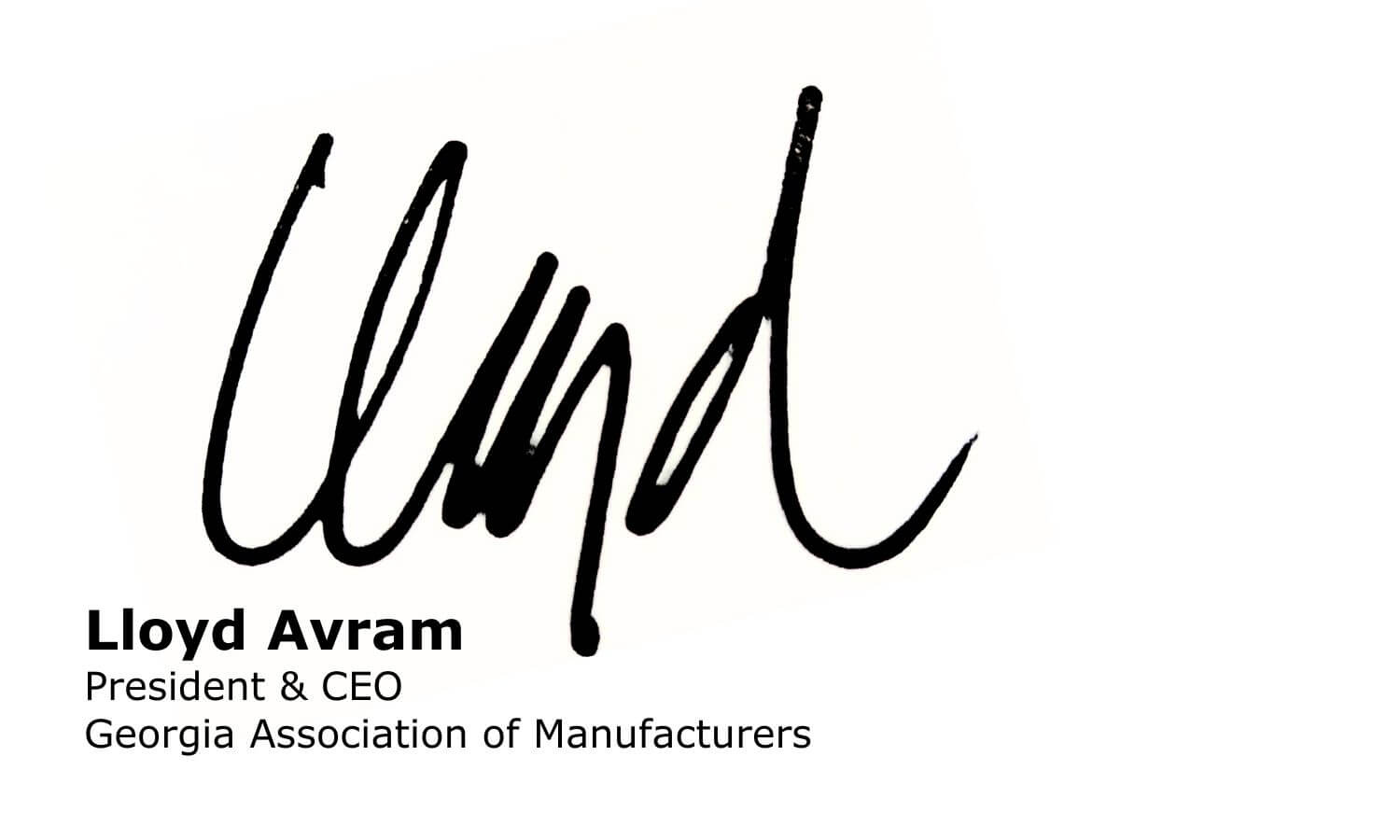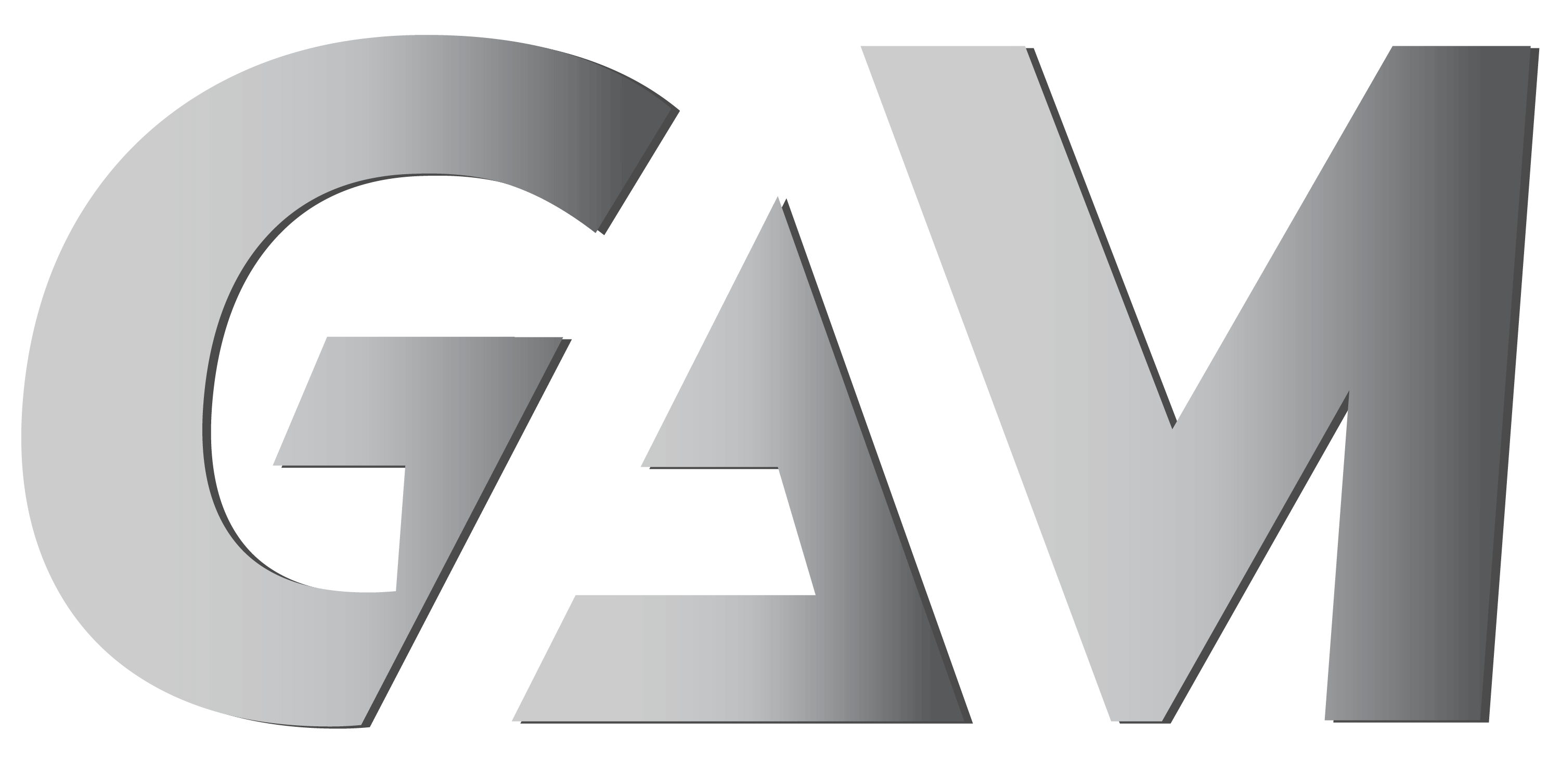Reimagining the Workforce for a Modern World

Pictured from left: Luther Ingram, David Logan, Jon Neff, Lloyd Avram
From advanced robotics to cleanroom environments to data analytics, AI and sustainable production, today's manufacturing careers look nothing like those from generations past.
At the Atlanta Business Chronicle “Made In Georgia” event September 25, GAM President and CEO Lloyd Avram hosted a panel of executives from Georgia-based employers Lockheed Martin and Roper Corporation (a subsidiary of GE Appliances) as well as consultancy SKL’D Staffing.
The group shared their perspectives and best practices for building a resilient workforce that can meet the demands of modern manufacturing and support long-term economic growth.
If you missed it, here’s your chance to “sit in” on the conversation and insights.
Panelists:
- Luther Ingram, President and Executive Director, Roper Corporation, a subsidiary of GE Appliances
- David Logan, VP, Air Mobility and Maritime Missions and Marietta Site Operations, Lockheed Martin Aeronautics
- Jon Neff, Co-Founder and CEO, SKL’D Staffing
- Moderator: Lloyd Avram, President and CEO, GAM
Moderator Lloyd Avram: This is no longer our grandfather's industry. The days of dark, dirty, dangerous jobs are largely behind us.
Luther, Dave, I've been to your facilities. I've seen what you folks do. It's nothing short of spectacular. From virtual reality to automation to AI to robotics — it’s all clean, safe, bright.
And Jon, as you try to identify top talent to work in these facilities, and the industry broadly, you're looking for skilled talent that 10 years ago was very different.
Each of you is on the front lines. Help our audience understand the worker's experience in modern manufacturing, and importantly, what you're doing to make it even better.
Luther Ingram: We're in a time of technology-based manufacturing. But our generations continue to change as well.
Baby Boomers are retiring out. We continue to have Gen X and millennials, and now Gen Zs are coming into the workforce. Generations with different requirements, different expectations than the previous. Management styles must continue to evolve along with our manufacturing. And how we adapt and evolve also may depend on where we’re located and whether it’s a rural or metro area.
David Logan: Yeah, we see similar changes. I’ve spent four decades in the aerospace and defense industry and (the workplace) has changed dramatically. It is still assembling and building and manufacturing. But aircraft is dramatically different today than it was 5 years ago, 10 years ago, for sure 40 years ago when I started.
Applying technology has become critical, not only for us to produce higher quality, better products — but also to attract talent interested and willing to work with us. Plus, it’s really become more of a true technical job as opposed to a traditional blue-collar role.
We have opportunities to attract talent. We just need to be really good at getting the message out to applicants that manufacturing is vastly different than what their parents and grandparents experienced.
Jon Neff: That's a great point, David. We're seeing an awareness gap.
It's changing rapidly, but employees and job seekers still aren't aware of that. We need to start educating the future workforce about what's available. Recently I saw a New York Times article that was all about the face of the long-term unemployed — and it’s the college graduate. We had this dichotomy where we had all these great jobs available. And we had a shift in the college graduate, and the workforce needs to pivot accordingly.
Moderator Lloyd Avram: How do you create awareness to these groups who maybe think of manufacturing as manual labor?
Jon Neff: We need to let candidates know that these careers exist. It starts with being in the classroom and making sure that students have not only the technical training, but also the soft skills and the career skills training.
Moderator Lloyd Avram: We all know there’s tremendous manufacturing growth and expansion in Georgia. The flip side is that the workforce hasn't expanded to keep pace with the demand for jobs. Put simply, we don't have enough skilled workers today. Compounding matters is the sobering fact that 25% of manufacturing workers in Georgia are 55 years of age or older and getting ready to retire.
Share with us your strategies for addressing the significant manufacturing workforce shortage around Georgia.
Luther Ingram: First, technical colleges are vital. Meanwhile, the consumer continues to expect more, so we need to continue to build more. There has to be a collaboration, inside the four walls of manufacturing, around how to grow manufacturing capability.
Roper Corporation is in a very small, very rural community. 7,000 population. We employ 2,600. This requires us to think about and approach things a little differently.
We’re trying to develop both a people and an automation strategy to continue to grow with the consumer base that's expecting growth out of us. Partnering with technical colleges is a big part of it. As is building relationships inside that community — because you can't just be a manufacturing company that just shows up for the consumer and not the employees. Those partnerships are very key.
David Logan: We're a big company in Marietta, and our C-130 aircraft and platform have been operating for 70 years. There was a time when everybody knew who we were and what we did. But today, when our employees talk to people around our community, they find that local residents don’t really know what we do. Yet our airplanes land and take off every day over the area. We asked ourselves, “What do we need to do to connect with people to get them interested in a job here?” The mission is critical for us.
We used to bring retiring or exiting military personnel from across the runway at (adjacent) Dobbins Air Force Base and put them to work. Employee family members have traditionally also been a source of recruitment. We still have third-, fourth- and fifth-generation employees with a family heritage of working at Lockheed Martin.
But we’ve had to change our approach for two reasons. One, because the expectations of the products we build and the sophistication of our processes have evolved, and secondly, we need to help prospective employees understand that manufacturing is not the same type of job they’ve heard about for years.
We have a tremendous opportunity in Georgia to partner with both the technical school system and the high school vocational education programs that are now being restored.
As an example, we’ve partnered with Osborne High School here in Marietta. They have a tremendous program with all kinds of different opportunities — everything from construction to medical and aerospace and everything in between. We help students understand the mission of what we do.
Jon Neff: At SKL’D, our primary objective is to widen the top of the workforce funnel and expand the pool of candidates. It really does start at the high school level, and even grade school.
We work with a large manufacturer north of Atlanta. They coordinate with school systems in the area to bring in dozens of high school students each semester to walk the floor and see for themselves what these facilities are like and the incredible career potential they offer.
Another way to close the workforce gap? Accessibility. How can you remove barriers to work? It could be offering transportation, or childcare, you name it. Simply identify and come up with solutions to make talent more accessible.
Keep in mind that much of the workforce conversations here center around talent acquisition — but also, let’s work to hold on to the talent that we have as well. We know the cost of turnover is exponentially higher than the cost of hiring and training. Retention is critical.
Lloyd Avram: I spoke to a group of high school students in Forsyth County last week during their Manufacturing Day. About 100 students in total, all very interested in engineering and purpose-driven work, which manufacturing can offer. David, what kinds of manufacturing jobs are available at Lockheed? And importantly, what's required to get those jobs?
David Logan: Aside from historical practices of aerospace and defense, there are technology careers available right there on the floor, from programming to engineering to augmented reality and AI. These disciplines work with the technicians every single day, helping them understand and define requirements, interpret engineering and more.
And to Luther’s point earlier regarding AI, it's not about replacing jobs. It's about helping employees to do their jobs better, with higher accuracy. We want to do it right the first time, every time, and so that you know that when the pilot steps into the aircraft, it’s going to operate the way it's designed and intended to. That’s a commitment we make to the pilots every day. This requires a highly trained workforce that understands the technical side of the business and doesn’t just follow a drawing and a set of instructions. They need to know when to raise a hand if something doesn’t look right. The jobs are much more technical than they ever have been.
Moderator Lloyd Avram: Luther, I know you're doing tremendous work out at your facility to really improve the employee experience. Tell us what motivates this current cohort of employees and what you're doing to attract and retain talent in your facility.
Luther Ingram: Think about Baby Boomers — to them, careers were about getting a piece of the American pie. A home, a car, a pension. If I can get those things, I’m good, I will come in when you want me to come in.
Today, it's about the employee value proposition. The days of the pension are gone, so there must be something in it for the employee to stay long term.
One thing we’ve implemented is workforce flexibility. We have a population of about 1,500 people that only want to work part-time. We have an app where they can sign up to come in and work when they want to. This group already knows how to shoot screws, how to plug parts, how to do different things inside the space — so they help plug the gap when we have attendance issues.
Having a flexible workforce also helps with retention as well as training the next generation. As mentioned earlier, the aging workforce leaves gaps due to retirement. Now, instead of retirees taking part-time jobs at Home Depot, I can keep them at Roper and partner them up with a Gen Zer, and more smoothly transfer decades of knowledge to the young colleague just starting their career.
We also have healthcare on site for our employees. They can get on-the-clock care and prescriptions right there on campus.
Manufacturing today requires us to be creative in how we continue to grow.
Moderator Lloyd Avram: Jon, let’s talk about SKL’D: a highly innovative workforce platform, revolutionary in many ways. Talk to us about how SKL’D helps manufacturers build a pipeline of skilled talent.
Jon Neff: Our core competency is workforce development and hiring at scale. We look at different ways to build those pipelines. It could be accessing untapped communities. It could be working with trade schools. It could be just going out into the community and really understanding our clients' business and selling job opportunities for them on their behalf.
While doing that, we're able to look across our clients and our markets and truly understand what's important to the talent — and educate the client on factors that impact the ability to attract talent.
So, whether competitive pay, flexibility, access to additional work and hours, we help clients understand how to action value to the talent.
Moderator Lloyd Avram: Jon, are we doing enough in Georgia to upskill talent and ready this current cohort of workers for the workforce?
Jon Neff: I think that Georgia is doing a phenomenal job. I mean, obviously, with companies like Rivian coming in and attracting so much talent, we need to stay on top of it.
I'd say our technical college system is one of the best in the country: 22 campuses and
88 different systems.
Moderator Lloyd Avram: To each of you: If you wanted our audience to take away one key point about working in modern manufacturing, what would it be?
David Logan: We have opportunities that are unknown and unexpected. You can be in manufacturing and still be in a technical role and perform work that is making a difference and supporting a mission that is very important, and vital to, essentially every allied country in the world.
Jon Neff: I'd say play the long game. I think it starts early in education. So being embedded in your community in the school systems, educating this younger workforce about what you do and what jobs are available. It takes time and awareness, but I think there needs to be a commitment to enable your employees to really sell it to the younger generation.
Luther Ingram: I agree, current employees must be able to sell it. But I always say, remember the employee value proposition first. That's the most important thing. It's no longer important to be the largest manufacturer. Being the employer of choice is where you want to be.


